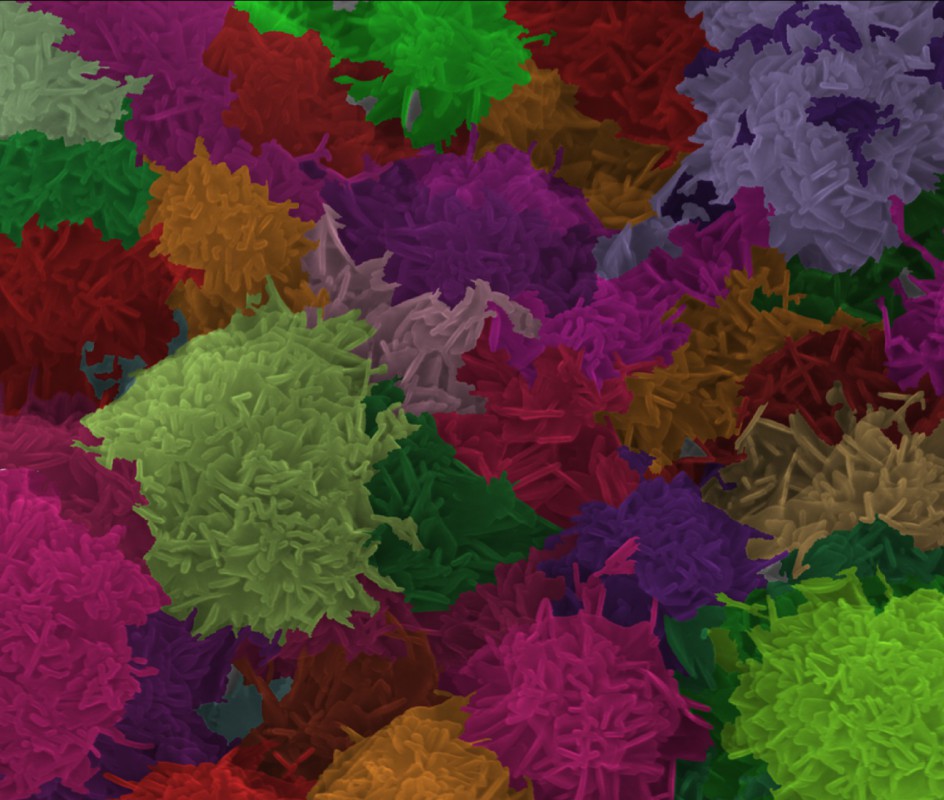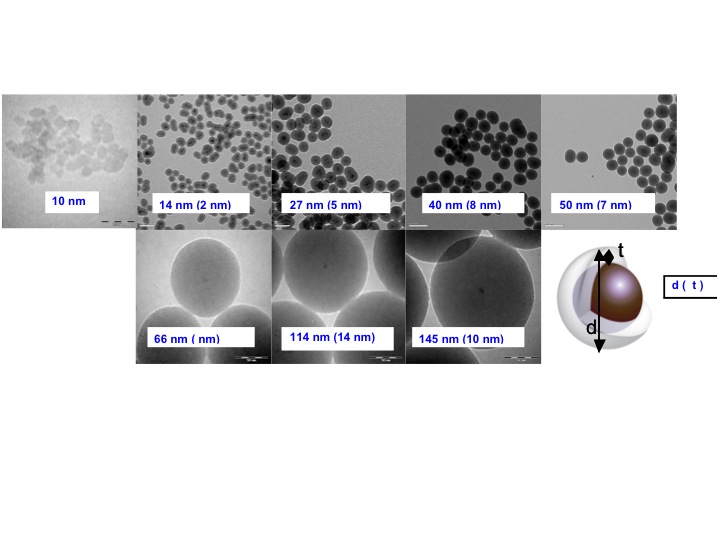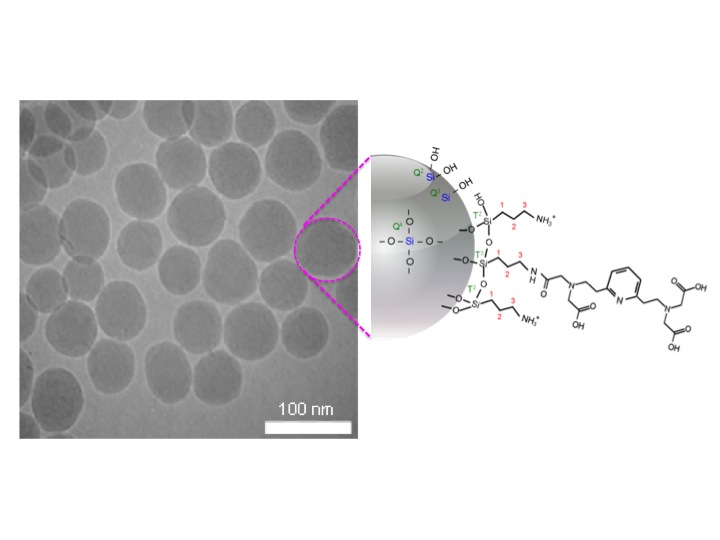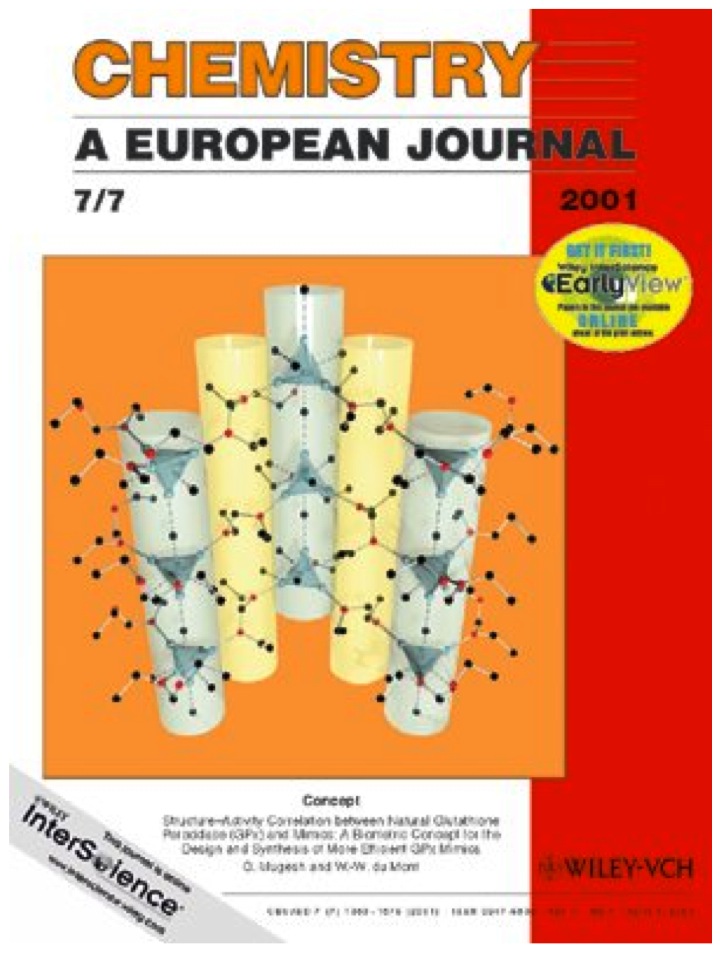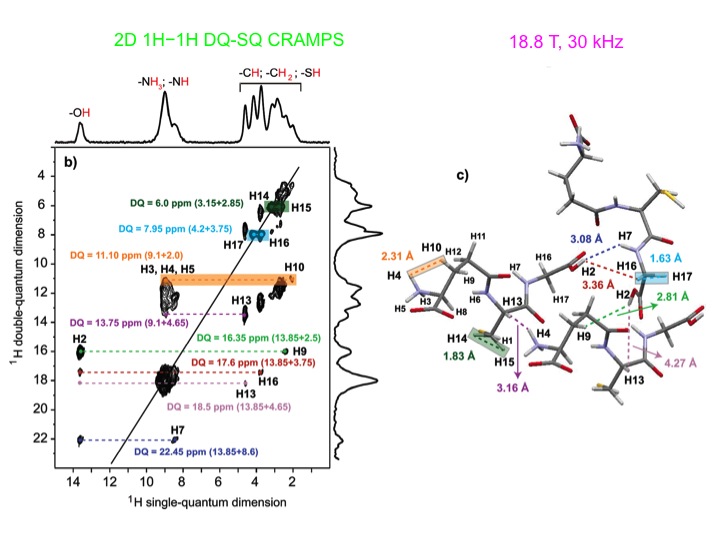Ongoing Supervisions
Projects
A Pan-European Solid-State NMR Infrastructure for Chemistry-Enabling Access (PANACEA)

PartnerEuropean Comission
The chemicals industry is one of Europe’s largest manufacturing sectors. Its modernisation relies on the capacity for atomic-level investigation of increasingly complex solid substrates in multifaceted research areas. Advances have been made in the development and use of solid-state nuclear magnetic resonance (NMR) spectroscopy, a powe...Plankton-like Protocells for Artificial Photosynthesis Targeting Carbon-neutral Energy Vectors (PLANKT-ON)
PartnerEuropean Comission
Global energy demands are continuously rising and necessitate green alternatives to fossil fuels, including wind and solar sources. Funded by the European Innovation Council, the PLANKT-ON project aims to develop a net-zero emissions technology inspired by nature that releases oxygen into the atmosphere and simultaneously produces formate as a p...Plankton-like Protocells for Artificial Photosynthesis Targeting Carbon-neutral Energy Vectors (PLANKT-ON)
PartnerEuropean Comission
Global energy demands are continuously rising and necessitate green alternatives to fossil fuels, including wind and solar sources. Funded by the European Innovation Council, the PLANKT-ON project aims to develop a net-zero emissions technology inspired by nature that releases oxygen into the atmosphere and simultaneously produces formate as a p...Biomaterials for Regenerative Medicine (CENTRO-07-0924-FEDER-002030)
CoordinatorOther National
CAPACITAR O CICECO PARA INTERNACIONALIZAR A I&DT EM MATERIAIS E INCREMENTAR A COMPETITIVIDADE NACIONAL (CENTRO-07-0962-FEDER-002003 #1)
CoordinatorOther National
CAPACITAR O CICECO PARA INTERNACIONALIZAR A I&DT EM MATERIAIS E INCREMENTAR A COMPETITIVIDADE NACIONAL (CENTRO-07-0962-FEDER-002003 #2)
CoordinatorUA
Centre for Research in Ceramics and Composite Materials - CICECO (LA0011: 2002-2010) (UI CICECO (UI 600/02) + POCI/LA11/2005)
CoordinatorFundação para a Ciência e a Tecnologia
Centre for Research in Ceramics and Composite Materials - CICECO (LA0011: 2011-2012) (PEst-C/CTM/LA0011/2011)
CoordinatorFundação para a Ciência e a Tecnologia
Centre for Research in Ceramics and Composite Materials - CICECO (LA0011: 2013-2014) (PEst-C/CTM/LA0011/2013)
CoordinatorFundação para a Ciência e a Tecnologia - R&D Unit Pluriannual funding
Centre for Research in Ceramics and Composite Materials - CICECO - INCENTIVO 2013 (INCENTIVO/CTM/LA0011/2013)
CoordinatorFundação para a Ciência e a Tecnologia - R&D Unit Pluriannual funding
Centre for Research in Ceramics and Composite Materials - CICECO - INCENTIVO 2014 (INCENTIVO/CTM/LA0011/2014)
CoordinatorFundação para a Ciência e a Tecnologia - R&D Unit Pluriannual funding
CICECO - Aveiro Institute of Materials (UID/CTM/50011/2013)
CoordinatorFundação para a Ciência e a Tecnologia - R&D Unit Pluriannual funding
Materials to be developed span from ceramics and inorganic materials to soft matter, biopolymers and organic-inorganic hybrids. They will be ‘right-size’ materials, prepared and processed at the appropriate length scale, or hierarchically structured, often multifuncional. Examples of the applications we wish to pursue are:- Green pho...CICECO - Aveiro Institute of Materials (UID/CTM/50011/2019)
CoordinatorFundação para a Ciência e a Tecnologia - R&D Unit Pluriannual funding
Materials to be developed span from ceramics and inorganic materials to soft matter, biopolymers and organic-inorganic hybrids. They will be ‘right-size’ materials, prepared and processed at the appropriate length scale, or hierarchically structured, often multifuncional. Examples of the applications we wish to pursue are: - Green ...CICECO - Aveiro Institute of Materials (UID/CTM/50011/2013)
CoordinatorFundação para a Ciência e a Tecnologia - R&D Unit Pluriannual funding
Materials to be developed span from ceramics and inorganic materials to soft matter, biopolymers and organic-inorganic hybrids. They will be ‘right-size’ materials, prepared and processed at the appropriate length scale, or hierarchically structured, often multifuncional. Examples of the applications we wish to pursue are:- Green pho...Controlling the length scale through "Chimie Douce": from inorganic functional materials to organic-inorganic hybrids (POCTI/CTM/46780/2002)
CoordinatorFundação para a Ciência e a Tecnologia
Functional Inorganic Materials Chimie Douce Organic-Inorganic Hybrids LuminescenceDelivery vehicles of therapeutic gasotransmitters NO and H2S based on nanoporous materials (PTDC/MED-QUI/28721/2017)
Local CoordinatorFundação para a Ciência e a Tecnologia
EJD-FUNMAT - European Joint Doctorate in Functional Materials Research (EJD-FUNMAT)
PartnerEuropean Comission
EJD-FunMat is a European Joint Doctoral programme in the field of functional materials research.EJD-FunMat is embedded in an existing research network, with previous experience in co-tutelle doctorates , but the project will add new major elements, with the strategic aim of becoming a permanent reference European Joint Doctoral Schoo...ENERMATaa (ENERMATaa)
Local CoordinatorEuropean Comission
ENERMAT.aa is a European project whose goal is to implement a sustainable transnational network of cooperation between public research structures and small and medium industries of the Atlantic Area in the materials for energy field. ENERMAT.aa essentially focuses on developing transnational partnerships around European centers of excellence spe...Especies de CO2 formadas a superficie de materiais porosos para aplicacoes ambientais caracterizadas por RMN de polarizacao nuclear dinamica (GAS2MAT-DNPSENS)
PartnerFundação para a Ciência e a Tecnologia
FAME - Functionalised Advanced Materials and Engineering of Hybrids and Ceramics (FAME)
Local CoordinatorEuropean Comission
FAME will assemble, structure, integrate and expand a world class-team exhibiting a critical mass of researchers in multifunctional Hybrids and Ceramics remaining at the forefront of this emerging and strategically important family of materials technologies for tomorrow. Today the hybrids and ceramics communities are too fragmented to face up to...From inexpensive raw materials to new luminescent glass materials (InLumGlass)
Local CoordinatorFundação para a Ciência e a Tecnologia
Fotoluminescência; Vidro; Zeolitos; NanocristaisImmobilized photosensitizers as new materials in water treatment (POCI/CTM/58183/2004)
PartnerFundação para a Ciência e a Tecnologia
Photosensitizers Silica based material Immobilization Microorganisms inactivationImmobilized surface rare earth and actinide aryloxides Activation of small molecules (CO2,CH4,C2H6) (POCTI/QUI/42919/2001)
Local CoordinatorFundação para a Ciência e a Tecnologia
Organometallic surface chemistry Immobilized catalysts Block f elements aryloxides Activation of CO2, CH4, C2H6Improving the Central X-Ray Diffraction Laboratory at University of Aveiro (REEQ/183/QUI/2005)
CoordinatorFundação para a Ciência e a Tecnologia
The single crystal X-ray diffractometer equipped with an area detector (CCD) is installed in the Department of Chemistry / CICECO since September 2006. In this period of time, the equipment was used extensively for collecting X-ray structural data collection of small molecules and framework solids prepared by members of associated laboratories C...Luminescent Lanthanide Silicate Synthesis Using Lanthanide Complexes as Structure Directing Agents (POCI/CTM/58863/2004)
PartnerFundação para a Ciência e a Tecnologia
Functional Inorganic Materials Luminescence Microporous Silicates Lanthanide ComplexesLuminescent Metal Organic Frameworks for anti-counterfeiting and logic computing (LUMIMOF)
CoordinatorEuropean Comission
Data security and protection is a global key concern, challenging industry, governments and customers. The EU-funded LUMIMOF project aims to develop ground-breaking luminescent metal–organic frameworks at the nanometer level to be used in anti-counterfeiting applications and in logic computing gates, able to be tailored to a variety of existing ...MNAA - Centres of excellence in materials for the economic development of the Atlantic Area (MNAA - MATERIALS NETWORK FOR THE ATLANTIC AREA)
Local CoordinatorOther International
A network dedicated to industryGather academic human and materials resources-to create a critical mass sufficient to tackle high technology research-to exploit the complementarities of the partnersShare our best practices in Technology Transfer processIdentify weaknesses and...Nanopartículas integrando aquecedores e termómetros: aplicações ao movimento Browniano e em hipertermia (nanoHYperTHerm)
PartnerFundação para a Ciência e a Tecnologia
Nanotermómetros; Nanoaquecedores; Hipertermia; Upconverting nanoparticlesNanostructured Photoluminescent rare-earth nanotubes and microporous silicates (PTDC/CTM/73243/2006)
CoordinatorFundação para a Ciência e a Tecnologia
Nanotubes Microporous Rare Earth PhotoluminescenceNew hydroxypyrimidinone-grafted solid chelating matrices for environmental and biological applications (PTDC/QUI/65647/2006)
Local CoordinatorFundação para a Ciência e a Tecnologia
Chelating matrices Specific chelators Hydroxypyrimidinones Hazardous metalsNovel Multidimensional Lanthanide-Organic Frameworks: Hydrothermal Synthesis, Structural Characterisation and Applications (POCI/QUI/58377/2004)
PartnerFundação para a Ciência e a Tecnologia
Crystal Engineering Lanthanide-Organic Frameworks Coordination Polymers Functional MaterialsPhoto-responsive organic-inorganic hybrid multiferroics: A way toward multifunctional electronics (PTDC/CTM-CTM/4044/2020)
PartnerFundação para a Ciência e a Tecnologia
Organic-inorganic hybrids Multiferroics Piezoelectricity FerroelectricityPTNMR - Portuguese Nuclear Magnetic Resonance Network (REDE/1517/RMN/2005)
Local CoordinatorFundação para a Ciência e a Tecnologia
The main mission of the Portuguese Nuclear Magnetic Resonance Network (PTNMR) is to provide to the scientific community with access to modern and up-to-date NMR spectrometers, housed in scientific institutions with competence and scientific expertise on the use of this type of equipment. The Portuguese NMR network was created with the support of...Rational design of hybrid organic-inorganic interfaces: the next step towards advanced functional materials (HINT)
PartnerEuropean Comission
Hybrid organic-inorganic (HOI) materials synthesized using soft inorganic chemistry allow a combination of organic and inorganic units at molecular/nanoscale level, thereby opening access to a wide spectrum of multifunctionality not possible with traditional concepts of materials science. These innovative multifunctional materials will have a ma...Rede Nacional de Ressonância Magnética Nuclear (PTNMR)
Local CoordinatorFundação para a Ciência e a Tecnologia - REDES
Redox-active Metal-Organic Frameworks as Electrode Materials for Lithium-Ion Batteries (RedoxMOFs)
CoordinatorFundação para a Ciência e a Tecnologia
One of the main concerns of modern society is reducing its dependence on fossil fuels. Due to their low cost and low environmental impact, electrical energy storage devices are among the most promising alternatives to conventional fossil fuels, as the electricity generated from renewable sources may be efficiently stored. In particular, lithium-...Regularity and stability of ordered mesoporous materials containing aluminium and titanium (POCTI/CTM/45859/2002)
Local CoordinatorFundação para a Ciência e a Tecnologia
MCM stability pore structure modificationRelação entre as propriedades de fotoluminescência e a estrutura em híbridos orgânicos/inorgânicos com aplicações ópticas (POCI/V.5/A0067/2005)
PartnerFundação para a Ciência e a Tecnologia
SGH : Smart Green Homes (Smart Green Homes)
PartnerIndustry National
The Smart Green Homes (SGH) Project aims to develop integrated product and technology solutions for the households, raising standards of comfort, safety and user satisfaction to a new level and, at the same time, to respond to the problems of sustainability of the Planet, increasing the energy efficiency and reducing the emission of gaseous poll...Targeted Contrast Agents for Magnetic Resonance Imaging (MRI) and Nuclear Scintigraphy (TARCAS) (POCTI/QUI/47005/2002)
Local CoordinatorFundação para a Ciência e a Tecnologia
Agentes de Contraste Vectorizados Cintigrafia Nuclear IRM Reconhecimento MolecularWater Nanodrops in Microporous and Inorganic-Organic Hybrid Materials (PTDC/QUI/65805/2006)
CoordinatorFundação para a Ciência e a Tecnologia
Water Clusters Microporous materials Organic-inorganic hybrids NanostructuresPublications
Si-29 MAS NMR and Raman spectroscopy studies of synthetic microporous (Zr,Hf)-umbite
Lin, Z; Rocha, J
2005, MOLECULAR SIEVES: FROM BASIC RESEARCH TO INDUSTRIAL APPLICATIONS, PTS A AND B, 158, 861-868.
ISBN:
0-444-52082-1
Progress in multiple-quantum magic-angle spinning NMR spectroscopy
Rocha, J; Morais, CM; Fernandez, C
2005, NEW TECHNIQUES IN SOLID-STATE NMR, 246, 141-194.
ISBN:
3-540-22168-9
Microporous mixed octahedral-pentahedral-tetrahedral framework silicates
Rocha, J; Lin, Z
2005, MICRO- AND MESOPOROUS MINERAL PHASES, 57, 173-201.
NMR relaxivity of Ln(3+)-based zeolite-type materials
Pereira, GA; Ananias, D; Rocha, J; Amaral, VS; Muller, RN; Elst, LV; Toth, E; Peters, JA; Geraldes, CFGC
2005, JOURNAL OF MATERIALS CHEMISTRY, 15, 35-36, 3832-3837.
Scaffolds for bone restoration from cuttlefish
Rocha, JHG; Lemos, AF; Agathopoulos, S; Valerio, P; Kannan, S; Oktar, FN; Ferreira, JMF
2005, BONE, 37, 6, 850-857.
Effect of Ca/P ratio of precursors on the formation of different calcium apatitic ceramics - An X-ray diffraction study
Kannan, S; Rocha, JHG; Ventura, JMG; Lemos, AF; Ferreira, JMF
2005, SCRIPTA MATERIALIA, 53, 11, 1259-1262.
Hydroxyapatite scaffolds hydrothermally grown from aragonitic cuttlefish bones
Rocha, JHG; Lemos, AF; Kannan, S; Agathopoulos, S; Ferreira, JMF
2005, JOURNAL OF MATERIALS CHEMISTRY, 15, 47, 5007-5011.
A method for simultaneously precipitating and dispersing nano-sized calcium phosphate suspensions
Lemos, AF; Rebelo, AHS; Rocha, JHG; Ferreira, JMF
2005, BIOCERAMICS, VOL 17, 284-286, 67-70.
ISBN:
0-87849-961-X
Method for tailoring and control the morphology, size and porosity of calcium phosphate granules
Lemos, AF; Rocha, JHG; Ventura, JM; Ferreira, JMF
2005, BIOCERAMICS, VOL 17, 284-286, 309-312.
ISBN:
0-87849-961-X
Transport and electrocatalytic properties of La0.3Sr0.7Co0.8Ga0.2O3-delta membranes
Kharton, VV; Tsipis, EV; Marozau, IP; Yaremchenko, AA; Valente, AA; Viskup, AP; Frade, JR; Naumovich, EN; Rocha, J
2005, JOURNAL OF SOLID STATE ELECTROCHEMISTRY, 9, 1, 10-20.
Photoluminescent MOF Sensors: On the Road to Cancer Diagnostics

In A.J.L. Pombeiro, K.T. Mahmudov, M. F. C. Guedes da Silva (Eds.), Synthesis and Applications in Chemistry and Materials
Flávio Figueira, Catarina Mouzelo, Filipe A. Almeida Paz, and João Rocha
2024, 145-174, WORLD SCIENTIFIC PUBLISHING COMPANY.
ISBN:
978-981-12-7993-5
Characterisation of pharmaceutical solids combining NMR, X-ray diffraction and computer modelling

In María Angeles Canales (Eds.), Biophysical Techniques in Drug Discovery
Mariana Sardo, Inês Martins, Chiara Vladiskovic, M.Teresa Duarte, João Rocha, Norberto Masciocchi and Luís Mafra
2018, 120-169, Royal Society of Chemistry.
ISBN:
978-1-78262-733-3
Nanotecnologias e nanoética

In Maria do Céu Patrão Neves (Eds.), Ética Aplicada: Novas Tecnologias
João Rocha
2018, 87-122, Edições 70, Almedina.
ISBN:
978-972-44-2131-5
Solid-state NMR applications in the structural elucidation of small molecules

In Cid, M-M and Bravo, J. (Eds.), Structure Elucidation in Organic Chemistry: The Search for the Right Tools
Sardo, M., Rocha, J. and Mafra, L.
2015, Wiley-VCH.
ISBN:
978-3-527-33336-3
N-(Phosphonomethyl)iminodiacetic Acid in the Construction of Coordination Polymers
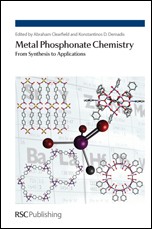
Metal Phosphonate Chemistry: From Synthesis to Applications
Paz FAA, Rocha J
2012, London, Royal Society of Chemistry.
ISBN:
978-1-84973-356-4
Layered Titanosilicates

In M. F. Brigatti and A. Mottana (Eds.), Layered mineral structures and their Application in Advanced Technologies
Lin Z, Paz FAA, Rocha J
2011, New York, European Mineralogical Union and the Mineralogical Society of Great Britain & Ireland.
ISBN:
978-0-903056-27-4
Crystallization of microporous titanosilicate membranes from clear solutions.

In R Xu, Z Giao, J Chen and W Yan (Eds.), From Zeolites to Porous MOFs - The 40th Anniversary of International Zeolite Conferences. Studies in Surface Science and Catalysis
Lin Z, Rocha J
2007, 170, 493-498, Amstesdam, Elsevier.
ISBN:
978-0444531858
29Si MAS NMR and raman spectroscopy studies of synthetic microporous (Zr, Hf)-umbite

In Čejka J, Žilková N, Nachtigall P (Eds.), Studies in Surface Science and Catalysis
Lin Z, Rocha J
2005, 158 , 861-868, Prague, Czech Republic.
ISBN:
978-0-444-51670-1
Microporous mixed octahedral-pentahedral tetrahedral framework oxides

In Giovanni Ferraris, Stefano Merlino (Eds.), Reviews in Mineralogy & Geochemistry - Micro- and Mesoporous Mineral Phases
Lin Z , Rocha J
2005, 57, 173-201, Mineralogical Society of America, Geochemical Society .
ISBN:
978-0-939950-69-0
Preparation of titanosilicate ETS-10 and vanadosilicate AM-6 membranes
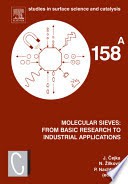
In Čejka J, Žilková N, Nachtigall P (Eds.), Studies in Surface Science and Catalysis
Tiscornia I, Lin Z, Rocha J, Téllez C, Coronas J
2005, 158 A, 423-430.
ISBN:
978-0-444-51670-1
Progress in multiple-quantum magic-angle spinning NMR spectroscopy

In Klinowski J (Eds.), New techniques in solid-state nmr-topics in current chemistry
Rocha J, Morais CM, Fernandez C
2005, 246, 141-194, Springer.
ISBN:
978-3540221685
Progress in Multiple-Quantum Magic-Angle Spinning NMR Spectroscopy

Topics in Current Chemistry
Rocha J, Morais CM
2004, 246, 141-194, Berlin,Heidelberg , Springer-Verlag.
ISBN:
978-3-540-71426-2
Patents
Nanomagnete-porphyrin hybrid materials, process for synthesis and application in water disinfection formulations
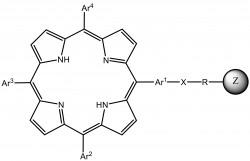
Materials National
Cavaleiro, José ; Tome, Augusto ; Tome, João ; Rocha, João; Lin, Zhi; Carvalho, Carla ; Costa, Liliana ; Alves, Eliana ; Cunha, Maria ; Faustino, Maria ; Neves, Maria ; Rainho, José;
The present invention relates to the synthesis of new nanomagnet-porphyrin hybrid materials of general formula (I) and their use for photoinactivation of microorganisms existing in contaminated waters. The process used for the synthesis of these hybrid materials involves immobilization, through covalent bonding, of meso-tetraarylporphyr...Use of a crystalline microporous aluminium methylphosphonate for the purification of vinyl chloride

Processes National
Rocha, João; Coutinho, João ; Freitas, Francisco; Valente, Anabela ; Lin, Zhi
The present invention relates to the separation of ethyl chloride and vinyl chloride by absorption using a crystalline microporous aluminium metilphosphate as the absorbent.The absorption ability of aluminium methylphosphonate to ethyl chloride is always higher than to vinyl chloride, at the same temperature and in the press...






